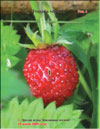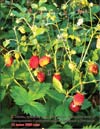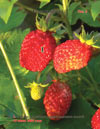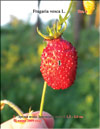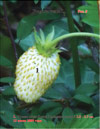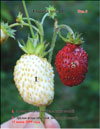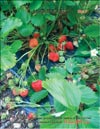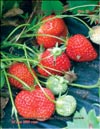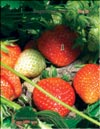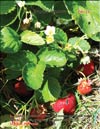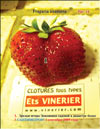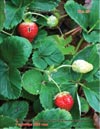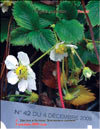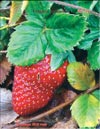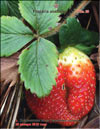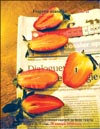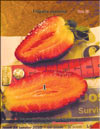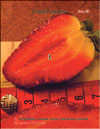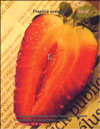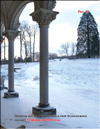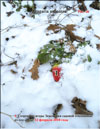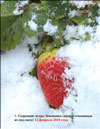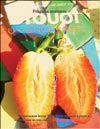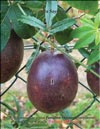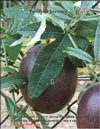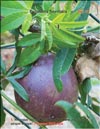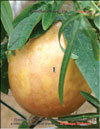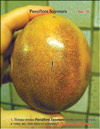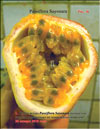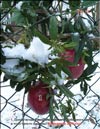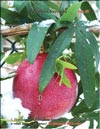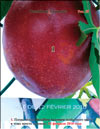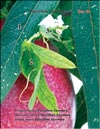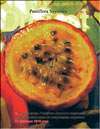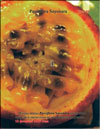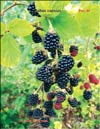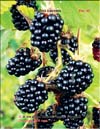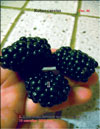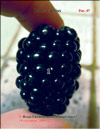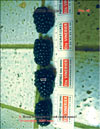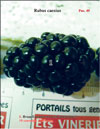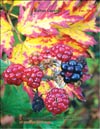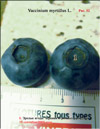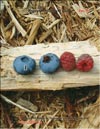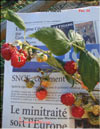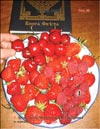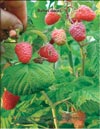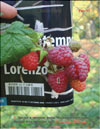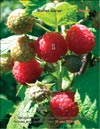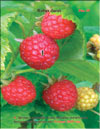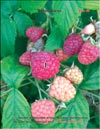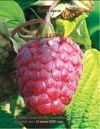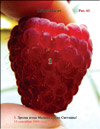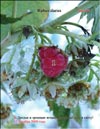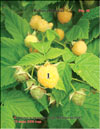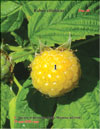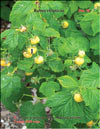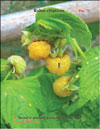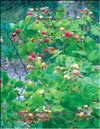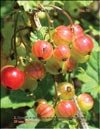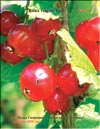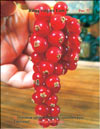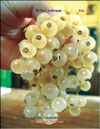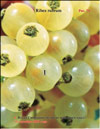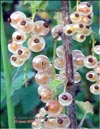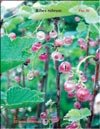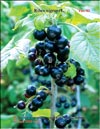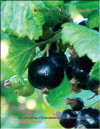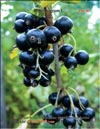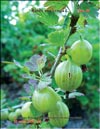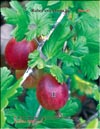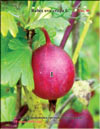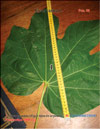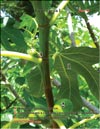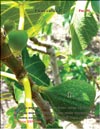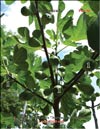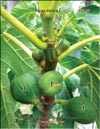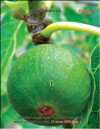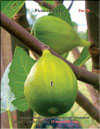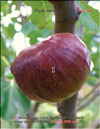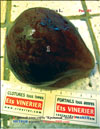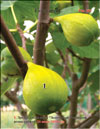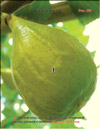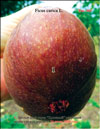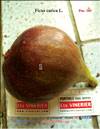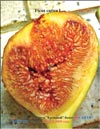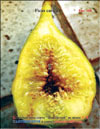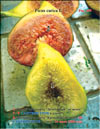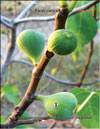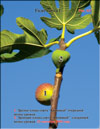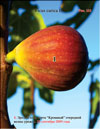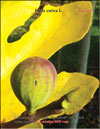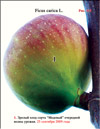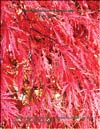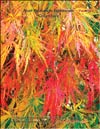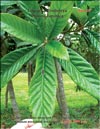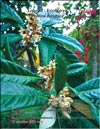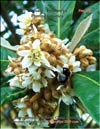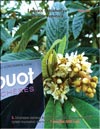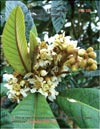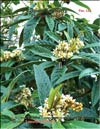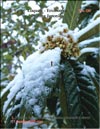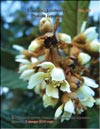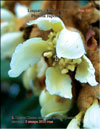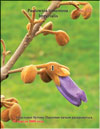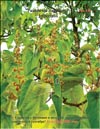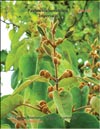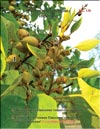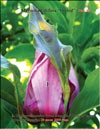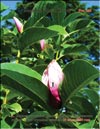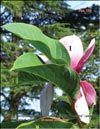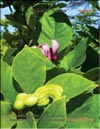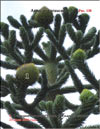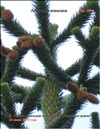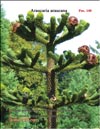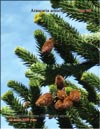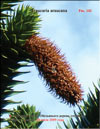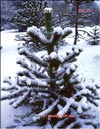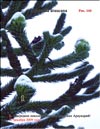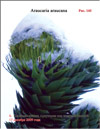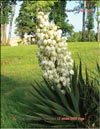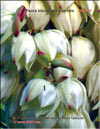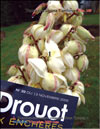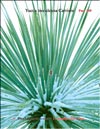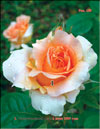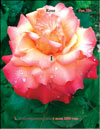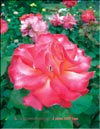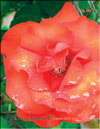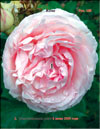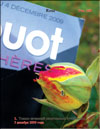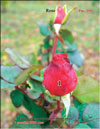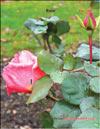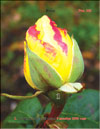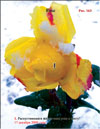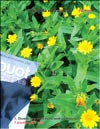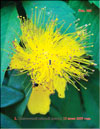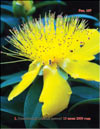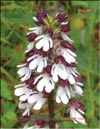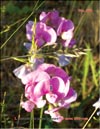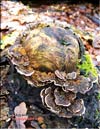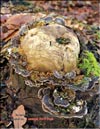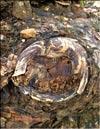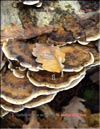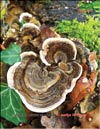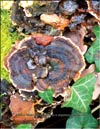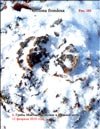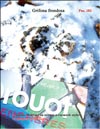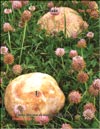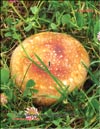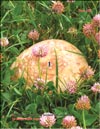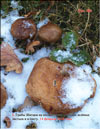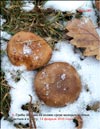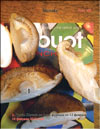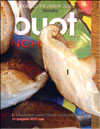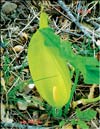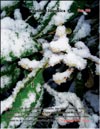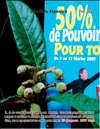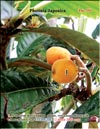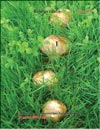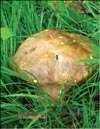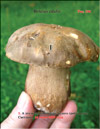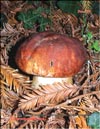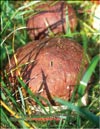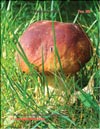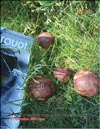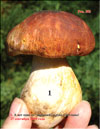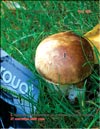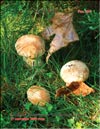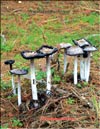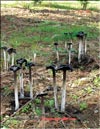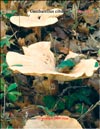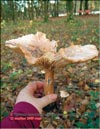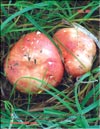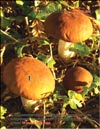| Main Page : About Me : Advice : Articles : Books : Curiosities : Events&Info : Paintings : Photographs : Seminars : Source of Life : Svetlana : Video |
Nicolai Levashov
The Source of Life
Part 9. Back to the Future
Photographs taken by my wife Svetlana de Rohan-Levashov
|
The latest chronicle of events happening on our estate since the psi-field or dark matter generator was installed was given in the "Source of Life 8 and 8+". The narration was discontinued in the second half of May, 2009. Such a long pause was not caused by the wellspring of "marvels" running dry and nothing interesting happening in our French park and garden, but because of my engaging in other things: I wrote a new book The Tale of Finest the Brave Falcon: Past and Present; several chapters of my biography and a range of other articles. On the contrary, this period was full of many interesting and unexpected things which amazed even us, who seemingly should be accustomed to "marvels" being perfectly aware that all they are the result of the psi-field genera-tor I had created. Isn’t it wonderful to have the privilege of using photography which allows us to freeze real events in time and come back whenever we wish and reconstruct them? It would be almost impossible to prove the reality of the events I talk about without it, because there is no way to let all interested persons see everything personally. Photographs solve this problem efficiently. Therefore I can continue my narration about new "marvels" a year later thanks to Svetlana’s regular pictorial record keeping of every interesting and unusual phenomenon that occurs in our park and Magnolia garden. In the second half of May, 2009 wild strawberries (Fragaria vesca L.) covered all the glades of our domain. They were huge from the very beginning: 10 to 20 times bigger than they should be. Instead of being tiny "Fraises des bois" they looked like a medium common strawberry. A most extraordinary spectacle, I must say! The June wild strawberries were even bigger than those of May (Fig. 1). In May and the second half of June we observed ripe berries, ripening ones, plant ovaries, flowers and buds on one and the same plant (Fig. 2). This picture (Fig. 3) will help us to visualise the size of them; they are indeed huge. Their size was commensurate with the leaves which had become much bigger than those outside our domain. The next photo (Fig. 4) dispels all doubts: a wild strawberry bigger than Svetlana’s forefinger phalange! However, these were not all the surprises with which the wild strawberry presented us in 2009. Svetlana unexpectedly detected a white variety (Fig. 5)! Oh, yes, it was precisely the white wild strawberry, not the pinkish-white one, a result of the plant breeders’ work. They’ve got several sorts of white strawberry ("Pineapple Crush", "Weiss Solemacher" and others), but I could not find anything about the wild white strawberry which differs from the red ones in its outside appearance (Fig. 6) and tastes and smells differently. The wild white strawberry has a very strong aroma and a pretty unusual taste, which is a combination of pineapple, banana and orange! It began to be cultivated relatively late—at the end of the 15th century having been brought from Eastern Asia and grown throughout Europe and America over the course of time. The progenitor of the white strawberry cultivar was the wild one which later disappeared from the forest glades. In the Loire valley the wild white strawberry vanished about two hundred years ago. Also, nobody had ever seen any of them within the limits of our estate during all the years of the experiment until June, 2009 (Fig. 7 and Fig. 8)! The appearance of wild white strawberries can be possible in only one case—the seeds which got into the soil two hundred years ago had been lying dormant all this time until the necessary and sufficient conditions for their germination appeared as a result of the dark matter generator’s effect. This is another confirmation of the fact that the area has recuperated its initial environmental characteristics being influenced by the psi-generator. The soil, subterranean waters and air have returned to their pre-contamination condition! The psi-generator influences the ecology of the place so that it reaches the state which it had one, two or five hundred, a thousand, a hundred thousand or even millions of years ago! So, if the seeds of plants, spores or mushroom mycelia happened to be preserved in a dormant state, they began to grow and develop after their long period of "lethargy"! Thus, the ecological environment goes back to the past while heading to the future. It is a fact, no matter how paradoxical it sounds. It is probably the only case when returning to the past has a particularly positive effect, the essence of which is the following. Man’s "reasoning" activity has immensely damaged the ecology of Midgard-earth for the last two hundred years, especially crippling it in the last century. The harm is so grave that modern technocratic civilization built on parasitic principles cannot neutralize it even partially. Only technologies based on the essentially new knowledge and understanding are able not only to stop the destruction of the noosphere but to restore what has been spoiled and destroyed, seemingly irreversibly. The psi-field generator is the "magic wand" which can do the impossible and restore the ecology of the place, eliminating all contamination, the result of human activity for the last hundred years. It can purify the underground waters, soil and air and restore and even create a fertile layer of soil. But this is not all! The dark matter generator creates that which Nature could not! It stimulates the non-freezing of arboreal juice, continuous abundant fructification throughout the whole year in the open air, the ability of plants to synthesize water and other substances which provide the nutrients their vital functions require plus an incredible speed of growth and enormous fruits which are several times bigger than those outside its action. These are not mere suppositions but fact. The psi-field generator which I have installed in a mushroom plant in Moscow caused a notable increase in productivity. This particular variety was the Shiitake, which is now 32 times more productive than the best enterprises of this kind in Holland. I think there is no need to say that we use no chemical fertilizers and our mushrooms are absolutely organic! Besides I also succeeded in enabling Shiitake and other high-value mushrooms to grow not just on dead wood but on bases which before were considered impossible. This resulted in getting substances, highly useful for the human organism, which nobody ever has obtained, including Mother Nature! In addition, the psi-field generator I placed there changes the chemical composition of the water which is used for watering. All harmful and unnecessary admixtures disappeared in the ordinary tap water and elements which were in insufficient quantity or absent in it, initially, appeared. This information is confirmed by laboratory tests. But all this is the subject of another article and I touch upon it only to prove that the phenomena which are observed in our French domain are the result of the action of the psi-generator, not the "uniqueness" of the place. Moreover, the generator which I installed in Moscow was created to solve fundamentally other tasks than in France. Thus the practical results plainly demonstrate that the psi-field generator solves the tasks and creates the living conditions for plants and mushrooms I have consciously introduced into it. Necessary corrections and even absolutely new programs were installed in both generators over the course of their functioning. The old programs were not cancelled and continued to function, I just added the new ones. Also, I would like to repeat: the psi-field generators are made of so called "dark matter" and do not have a physical carrier. Nevertheless, they exert more than real influence upon plants, including mushrooms, and fish. I have not carried out experiments on domestic animals yet; this is a matter for the very near future. However, there is no reason to consider the effect of the generator to be fundamentally different from what has been exerted on plants, mushrooms and fish. There is another moment here. Since the psi-generator does not have a physically dense form, I cannot send a schematic of to all interested persons even should I wish it. Besides, even if I succeeded in drawing it on paper, it is highly unlikely that anyone could understand it and even more so create the device. Not because people are stupid or unable to understand the information, but because the action of the psi-field generator is based on absolutely different principles and laws from those which modern mankind knows today. Moreover, in order to create this kind of generator one should have the necessary qualities and potential without which it is impossible to do even if one correctly understands its principle of operation. Now let me come back to our French estate and tell you about the nearest relative of the wild strawberries (Fragaria vesca L.), the garden strawberries (Fragaria ananassa). The winter frost of -20° C in January 2009 had no effect on it and new green leaves appeared from under the snow on January 17. (More details in "The Source of Life-7"). The first mature strawberries appeared at the beginning of March ("The Source of Life-8"). Such an early appearance of strawberries in the open air was absolutely incredible, but it was just the beginning. It continued to do so despite the frosts at night and cold weather during the day in April and the beginning of May 2009. As I have already written before I introduced a new program, one for preventing the arboreal sap from freezing, into the working psi-field generator several years ago that changed the sap so that the clusters of water cannot freeze! Nature has never created anything like this, but at the same time it prompted the direction of the search. The amphibious have acquired a unique characteristic in the course of their evolution: frozen water inside their cells does not form the kind of ice crystals, the volume of which is bigger than the volume of the water. As we know water is a substance which increases its volume when passing to the solid state. This is the reason why ice crystals tear a cell when frozen. The cell dies as does the whole living organism, because all cells appear to be torn by the ice crystals. Only the amphibious are not subject to this, even when completely frozen, although the water within their cells does freeze. This suggested the idea of finding such a structure for water clusters which would prevent them from freezing. I succeeded in that and now our subtropical, tropical, subequatorial and equatorial evergreens (and not only them) do not freeze at a temperature of –20-22° C! It is highly likely that the arboreal sap will not freeze at considerably lower temperatures too, but I do not have any confirmative evidence of that yet. When this problem was successfully solved, another task appeared. Although the arboreal sap did not freeze any more, it moved inside a plant very slowly at temperatures below zero which manifested in the slow ripening of fruits. I introduced the next new program, the purpose of which was to increase the fluidity of the arboreal sap at temperatures below zero. I aimed at achieving the following: the lower the temperature, the quicker the arboreal sap would run within the plant’s veins. In other words the fluidity of the sap should increase pro rata as the temperature decreased. This was the task I set myself after the January frosts in 2007 in France to accelerate the maturing of the fruits in autumn and winter. We had just wait and observe. Last time I mentioned the mature and ripening strawberries was in the "The Source of Life-8+", in the middle of May. Then there were lots of mature, ripening and still green strawberries of enormous size (Fig. 9) and blossoming flowers. Look at the strawberries much closer (Fig. 10).
By the end of May the next crop of strawberries had ripened, some were about to ripen and some were still green (Fig. 11). Let me remind you that any variety of garden strawberry, independent of the place of pricking off the seedlings, be it the open air or greenhouse, flowers and produces strawberries for about a month or a month and a half, no more. In order to harvest strawberries all year around the seedlings are planted in the greenhouses every two months. In our case the garden strawberries were planted into the limestone soil in the open air in the end of April 2006 and since then nobody planted new seedlings. The critical temperature for the most frost-resisting varieties without a blanket of snow is –15° Ñ, and with 20-30 cm of snow is from –25° to –40° Ñ. In the first case the root freezes at –8° Ñ and buds, flowers and ovaries—at –1.5° Ñ! So, our strawberries should have been dead several times over because of the severe winters which France underwent for the last few years. However, that does not happen, but let’s not forestall events. The garden strawberry is a perennial plant. There are varieties which produce a crop in the late spring, summer or autumn (June bearing, Ever bearing and Day neutral). According to the reference data strawberries of all varieties ripen within two or three weeks, no more. In 2009 we had the pleasure of seeing mature strawberries at the beginning of March. Following the reference data, the strawberries should have disappeared from our garden in April, however, they continued to flower and bear fruits in April, May, June and July. One of the distinctive features of the 2009 continuous fruiting was the enormous size of the strawberries. Even the first ones were huge despite the cold winter often with night frost till the beginning of May. Our strawberries achieved the size of an average lemon (See "The Source of Life-8+", Fig. 348). Despite their size the pulp was homogeneous and sweet, unlike strawberries grown in greenhouses with the "help" of chemical fertilizers. For the sake of experiment several sorts of strawberries were planted in the open air in 2006. All of them produce fruits and react to the generator almost the same way. No considerable distinctions in their reaction have been noted in the last few years. The strawberries blossom, form ovaries and ripen unceasingly. Here is a photo dated July 11, 2009: we can see mature and still ripening strawberries, new ovaries, faded and just blossomed flowers among light-green leaves which have become thicker and more succulent (Fig. 12). The full-fledged ripening in spring proved that the psi-field generator had begun to influence the fluidity of the sap as intended. The strawberries could mature under low temperatures and night frosts only if the fluidity of the sap increased when the temperature decreased. However, then it was somewhat premature to draw a definite conclusion. A cold spring changed into a hot summer. Full-fledged ripening is the norm at this time of year, but high fluidity obviously did its share, because nobody has ever seen such abundance. It is also of interest that almost continuous fructification in the previous years, especially in 2008, did not exhaust seemingly fragile plants, but on the contrary, their new leaves and berries became bigger and thicker. The same phenomenon was observed in August 2009. The strawberries were not only huge but very dense and full of sweet juice. In the beginning of September the picture was the same: enormous mature and ripening berries hid themselves among green leaves (Fig. 13). Several years of observing our strawberries allow me to draw some very certain conclusions. The psi-field generator influences the plants so that the size of the strawberries continues to increase every year and all diseases concomitant with this plant gradually came to naught. There is no trace whatsoever of powdery mildew, leaf spot, leaf blight, verticillium wilt, rhizopus rot and gray mold! Some of our strawberry plants died of these diseases in the first year, but now all berries are clean and healthy; no fungus disease whatsoever has been detected since then, even when the weather was excessively rainy. Look at the September photo and see for yourself (Fig. 14). All berries are as pretty as they come and have a diameter of no less than 5 cm! These are not some specially selected strawberries of a special variety which produces giant fruits. These mature strawberries are ideal in every aspect. They are flawless. The photo somehow manages to convey their tender aroma and delicate taste, you can even feel the juice on your tongue and regret that you cannot grab and devour them immediately. Well, the photo is the photo and the next one proves that the strawberries continue to ripen in September in our garden in the open air (Fig. 15). Someone may object saying that there are varieties which produce strawberries in the autumn, or the seedlings were planted late. The answer is simple. It is one and the same variety of our strawberries that produce fruits from the beginning of March and they were planted in soil only once—in 2006. Nobody has ever planted new seedlings since then. No other arguments are left for sceptics, despite their ardent wish to deny the obvious. I gave a detailed description of the autumn fructification in other "Source of Life" sections; therefore in order not to bore you with repetition of that I shall come to winter at once and analyze how the introduction of a new program for increasing the fluidity of the sap at low temperatures influenced our strawberries. At the beginning of December 2009 our strawberries continued to blossom. Despite the frosts seizing the soil in November and December not only at night but during the day too, young ovaries appeared among fresh green leaves together with open buds and faded flowers (Fig. 16). The photo was taken on December 5 which is confirmed by the date of the magazine in Svetlana’s hands, December 4. It all comes down to our garden strawberries turning into evergreen plants with all-year-round fructification as a distinctive feature. The old leaves slowly die and the new ones, fresh and succulent, come instead. In December the snow in France, at least in the Loire valley, fell only in the middle of the month (Fig. 17) and melted in several days. It was impossible to take photos of the strawberry under such a snow, but the necessary impression is created by the Monkey-puzzle tree (Araucaria araucana) photo with several interesting trees in the background to which I shall come back later. The snow melted, but the frosts remained. As we already know, the buds, flowers and ovaries of the strawberries even of the most frost-resisting varieties are damaged at a temperature of –1,5° Ñ and the roots at –8° Ñ if there is no snow. So, anyone can imagine what should have happened with the ovaries which appeared after flowering in early December 2009. They should have died, but survived instead without snow but with frost which came in the 20-ies of December and stayed during the whole of January and part of February, 2010. The water for animals froze through almost to the bottom which means that the water in the soil froze too. In January powerful downpours often accompanied the day thaws. Nevertheless, these super-critical conditions did not hinder the appearance of mature strawberries in the end of January (Fig. 18), (Fig. 19 and Fig. 20)!
In order to dispel any possible doubt Svetlana took photos on the background of the newspaper dated January 21, 2010 (Fig. 21). Despite their belonging to the January crop, the size of the strawberries is not less than that of their summer "kinsmen", and some of them are even bigger (Fig. 22). The garden strawberries are 7 cm long! I believe that there is no need to emphasize how incredible the fact that strawberries ripened in the open air in cold and frosty January is. The size of winter fruits is impressive indeed, as well as the fact that the strawberries ripened very evenly (Fig. 23) and are full of delicious juice that oozes from every cell (Fig. 24). The cut shows drops of juice and the healthy and absolutely undamaged cells, which is an irrefutable proof that the program of the psi-field generator designed to prevent the arboreal sap from freezing and the augmentation of its fluidity at low temperatures WORKS very efficiently. It seemed that there was nothing else we could wait for from the garden strawberries (Fragaria ananassa). It had already become a hero producing mature fruits at the end of January. But it "thought" otherwise and "decided" to break the highest record possible. In February too there was frost without snow, especially strong at night. For example, the temperature in the evening, February 10, was –17° Ñ. In the morning, February 11, it went up a little and it began to snow. In the evening the temperature dropped considerably and on February 12 the temperature was –17° Ñ again, but this time everything was dressed in an ermine fur coat (Fig. 25). The snow did another service. It served as unambiguous indication of the exact date of the photo, because previously only the dates of the newspapers and magazines could prove the date of the photo and, of course, the date of the shot itself which is automatically embedded and stored in the file which is impossible to show to the reader due to clear reasons. Therefore, the photos with snow are the most demonstrative ones despite the fact that precisely the absence of snow and strong frost without snow affects the plants most dramatically. However, the frost cannot be seen on the photos. The whole of January was snow-free and frosty. Nevertheless, Svetlana could gather the first January crop of strawberries. Just two weeks passed and on February 12 Svetlana succeeded in finding new strawberries which had ripened despite frost and snow (Fig. 26)! This is a striking example that the process of growing and ripening of our garden strawberries in winter is the same as in summer, which in turn proves that the fluidity of the sap does indeed change at temperatures below zero. Moreover, it stopped depending on the temperature at all. Furthermore, the ripening of the strawberries (and not only them) under these drastic conditions demonstrates that a plant receives water. However, it is the arboreal sap that does not freeze, but rainwater does, as everywhere. Add to that the fact that the roots of the strawberries cannot reach subterranean waters which lie deep because our estate is located on a hill. Nevertheless, huge strawberries, full of sweet juice, did ripen and the light-green succulent leaves did grow in December, January and February. So, where does the water come from? The plants cannot melt the icy water in the soil. Have we come across another miracle? No, there is no miracle at all here. The riddle is solved rather easily. In 2003 I introduced a program into the generator which allowed plants to synthesize water for themselves. The first "swallow" to respond was the ARUM LILY (Lysichiton camtschatcense); the first but not the last. I wrote about that in my earlier articles. Thus, the combination of two programs—self-synthesised water and quick fluidity of the arboreal sap at temperatures below zero—triggers the strawberries to bear fruits in January and February at temperatures down to –20° Ñ. Moreover, the strawberries do not just ripen, but achieve enormous size (Fig. 27). The leaves of the plant paid no attention to the nipping frost either, appearing in great plenty in December, January and February as if nothing happened, which proves that the whole of the plant has changed, not just some part of it. The February strawberries in no way differed from their January "fellow countrymen" as did not the latter from the summer ones (Fig. 28). They are totally mature and succulent and demonstrate no damage of the pulp. The February strawberry was the missing link which closed the circle of all-year-round fructification within the bounds of our estate! The garden strawberry was not the only one which showed a notable reaction to the changes in the generator. Passiflora Sayonara did the same thing, about which I have already written in my previous articles, but let me do a quick reiteration. Passiflora Sayonara is a hybrid of two vines—a tropical Passiflora Caerulea and a sub-equatorial Passiflora amethystine which differ from each other in the conditions for their vegetation, the form and colour of their leaves, as well as flowers and fruits. They can grow in Europe ONLY in botanical gardens and greenhouses with good heating. Nevertheless, last year we were delighted to observe huge fruits among enormous evergreen leaves in December in the open air. Neither the vine itself nor its leaves and fruits suffered any damage from strong frost, snow and ice. But this is a sub-equatorial plant! Maybe it reacted as if it were desperately "frightened" or "confused"? It turned to be neither of these two things. This year it behaved almost the same way. In December 2009 Passiflora Sayonara again produced fruits despite frost, snow and icicles which hung in their splendour among evergreen non-freezing leaves (Fig. 29). In 2010 the fruits were bigger and the leaves increased their size too and became thicker than in 2009 (Fig. 30).
Moreover, new leaves appeared in the beginning of January 2010 which proves again that the speed of the sap increased when the temperature decreased (Fig. 31). The fruits continued to ripen during the whole of January and we noticed something new. These huge fruits acquired unusual colours which were never observed either in Passiflora Caerulea or Passiflora Amethystina Tocaja! Also nobody mentioned that the fruits of their hybrid, Passiflora Sayonara, ever acquired such colour (Fig. 32). These unusually coloured fruits reached an enormous size such as they have never reached within the bounds of our estate, let alone outside them (Fig. 33). I would like to emphasize that these fruits matured in January, 2010 which confirms that the new program on increasing the fluidity of the sap at temperatures below zero works very efficiently. By the way, the fruits of Passiflora Sayonara have several colours, each is very unusual (Fig. 34), and here is their enormous size in comparison with Svetlana’s hand (Fig. 35). This photo proves that they are fully mature and did not suffer from the January frost and ice in 2010 (Fig. 36). However, we saw later on that Passiflora definitely was not going to rest on its laurels. Two weeks passed and in February the sub-equatorial hybrid decorated itself with new beautiful fruits (Fig. 37) which also had an unusual colour and were even bigger than the January ones (Fig. 38). In the next photo (Fig. 39) we clearly see Passiflora’s enormous February fruit which is absolutely unharmed by frost with equally enormous and unharmed leaves. It is –17° Ñ, but the leaves are fresh and succulent. We can even see their veins and feel how the sap, the blood of the plants, circulates in every cell of the leaf and even see those cells should we zoom in to them in the picture. The next photo (Fig. 40) clearly shows Passiflora’s mature leaves (1), tender light-green several days leaves (2) and a faded flower with a new ovary (3). It is obvious that despite snow and frost life is burgeoning in them.
Young light-green leaves appeared on the vine and developed when the temperature was below zero varying from –10° Ñ to –20° Ñ, but as we can see Passiflora behaved as if there was no frost, snow and strong wind chilling to the marrow. The Passiflora’s fruits are not only enormous but also incredibly delicious and possess a subtle delightful aroma. They are mature both from the outside and inside without any sign of continuous impact of frost upon them (Fig. 41). This is a photo of the same fruit from Fig. 40 on the background of the same magazine dated February, 12 for the purity of the experiment, so to speak. Look at the next photo. Surely it makes your mouth water. This half of a Passiflora fruit looks so appetizing (Fig. 42). Regrettably we cannot eat it, but we can be sure that it was absolutely undamaged by frost. With every year we get more evidence that the Human Mind can win over the Chaos of Nature, not in opposition, but in symbiosis with it when human reasoning activity adds to the blind force of Nature that which it was unable to create. It is important here to understand the real Laws of Nature, not the fictitious ones and then everything will go quickly and efficiently. So it happened that the berries became the first protagonists of my narration. Therefore I will briefly describe other berry plants and mention their new acquisitions. I shall begin with the blackberry (Rubus caesius) which was described in the "The Source of Life-6". Then, in November 2008, the size of blackberries was 3 cm (Fig. 43) and it seemed to be the "wildest dreams" limit. We were mistaken. In July of the next year the same blackberry bushes were covered with numerous berries (Fig. 44) which became notably bigger (Fig. 45). They "decided" to organize a conveyor and continued to bear fruits till autumn inclusive. The size did not decrease because of that (Fig. 46). Look at the berries closer (Fig. 47) and much closer (Fig. 48 and Fig. 49). As we can perfectly see, the blackberries are 4.5 cm long which means that they added 1.5 cm in one year. We also may note that the blackberries grew in width too. We can only suppose what size they will be in 2010 and guess how long it will continue to increase. At the end of October the blackberries continued to bear fruit (Fig. 50).
In 2006 we planted a lot of berry plants in our garden; one being a bilberry (Vaccinium myrtillus L.). I described it in "The Source of Life-3" and since then it somehow escaped our attention. And in 2009 we were struck by the size of its berries. Look at them on Svetlana’s hands (Fig. 51). Amazing, isn’t it? It is hard to imagine that these common and well-known berries can be that size, but the photo dispels all doubts— this is the real size of the berries (Fig. 52)! In 2009 their diameter was 2.5-3 cm! The contrast between 2006 and 2009 is staggering (Fig. 53). Only three years have passed since ordinary plants from an ordinary nursery were planted into the worst soil one can find. We do not have any "special" varieties which produce crops and berries of such size. We also do not do any "photomontage" of which people, who have no idea what Adobe Photoshop is and how it works, accuse us. Oddly enough, nobody said a word about fabrication when we showed the first photos of the newly planted plants and the berries of the first crop. The extraordinary fact that those plants successfully took root in limestone and red clay, the only soil we had on our estate, and gave rich crops did not attract the attention of those fervent "unmaskers" for "some" reason. The same reason prevented them from taking care to at least acquaint themselves with the requisite living conditions of the plants I mentioned in my articles, or what computer graphics is and how it works. At that time the "fighters for justice" kept silent and only began to yell about a hoax when the results of the action of the psi-generator, impossible from their point of view, became clearly visible: enormous fruits and all-year-around fructification. Well, on their consciences be it! If we compare the photographs taken in different years, we shall see how the plants, the size of their fruits and the time of fructification changes owing to the work of the dark matter generator. Let’s take, for instance, the red raspberry (Rubus daeus). Fig. 53 demonstrates our first raspberries and bilberries. It was "long" time ago, in 2006. Look at the next photo (Fig. 54) dated October 21, 2007. The size of the raspberries differs in nothing from that of 2006. It was quite logical to suppose that in 2008 also the raspberries should not change their size. However, the June raspberries of 2008 appeared at least twice as big as in 2006 and 2007 (Fig. 55). Compare their size with the strawberries and sweet cherries and see that the raspberries became considerably bigger than before (Fig. 56). Thus, the raspberry needed two years after planting to start actively responding to the psi-field generator and manifesting changes. This means that every plant has its own time of response to the generator’s influence which depends on the plant—grass, bush or tree and the type of plant, because one kind, for example, trees, will respond differently to the influence of the generator than another. The reaction of a plant is also stipulated by its original climatic zone. However, trees of the same zone show different reactions too. The speed of response to the generator also depends on the age of a plant: the younger the plant, the quicker the reaction. This is quite understandable: a young plant is still in the process of forming and therefore its reaction is very dynamic, because the psi-field generator influences the spirit of the plant, in the likeness and image of which it is formed. Therefore, a young plant is formed from the very beginning of its life span with the changes introduced by the generator, while the adult plant, having already been completely formed, is forced to go through a transformation phase. That is why they are inert when influenced by the psi-field generator. To rebuild something always takes more force and time than building something like it should be from the very beginning. There is one more thing that influences the speed of a plant’s reaction to the generator—the place where it grows. Every spot on the surface of the planet has its own distinctive characteristics which can accelerate or reduce the speed of response of a particular plant to the generator’s influence. I can go on giving other details of that, but they are of less importance and therefore I would like to return to the raspberries. So, they took two years to manifest their reaction. The raspberries of 2008 were considerably bigger than in 2006 and 2007 and they continuously produced crops till late autumn (Fig. 57). The leaves were exposed to change too. They became bigger, thicker and acquired another colour. In 2009 the raspberries continued to change. They flowered surprisingly early and produced huge fruits, bigger than the previous year, at the end of May (Fig. 58). Although mature raspberries in May are an unusual event well worthy of our attention, I choose to concentrate on their size. The raspberries continued to produce fruits in June (Fig. 59 and Fig. 60) which appeared considerably bigger than in previous years (Fig. 61).
Well, someone again may express his sceptical opinion that this is a result of a close shot, especially considering the fact that the leaves of the raspberries became bigger too. I afraid I must disappoint them. The following photos sweep aside any doubts about enormous size of the raspberries (Fig. 62). This photo was taken on September 13, 2009 and demonstrates that the raspberries are perfectly commensurable with the walnut, which is never small. The next two photos were prepared especially for hardened sceptics (Fig. 63 and Fig. 64). This was not the last surprise that the raspberries organized for us. They continued to bloom and bear fruits. In December 2009 new ovaries appeared among green leaves. The photo shows that some of the ovaries began to form new berries and some still were faded flowers (Fig. 65). If someone is in doubt of the month on the photo, here is the next one (Fig. 66). Incredible, isn’t it? But the next photo is even more incredible (Fig. 67). Mature and ripening raspberries wear the ice fur coat! The snow is perfectly visible in the background. The ice on the photo means that there was warming during daylight hours, the snow thawed, and then it froze in the night and formed icicles. When this photo was taken temperatures below zero had been observed during several consecutive nights and the temperature during the day was +2 or +3° Ñ, not for too long though, otherwise the snow would have melted completely. I describe all this so minutely in order to make the picture clear: several days of snow and frost did absolutely no harm to mature and ripening raspberries and its leaves. The yellow raspberries (Rubus ellipticus) manifested the same reaction to the psi-field generator in 2008: huge leaves and berries and early fructification. Mature raspberries appeared on the canes as early as in the middle if June 2008 (Fig. 68). In 2009 the yellow raspberries became even bigger and showed up earlier than the previous year—in May 2009 (Fig. 69). The leaves became bigger too, so that huge raspberries look small on their background (Fig. 70), and acquired an unusual colour which advantageously emphasized the colour of mature raspberries (Fig. 71).
The next photo can be of special interest for those who have doubts about their size. It shows two varieties of raspberries, yellow and red (Fig. 72). As we can see they are identical; the information about the size of the red raspberries was earlier given in this article. The fruiting time of all plants which were subjected to the influence of the dark matter generator became longer, as did the abundance and size of the fruits. Every spring the flowering comes earlier which means that mature fruits appear earlier than the previous year. In spring 2009 the flowers of the red currant (Ribes vulgare Lam.) blossomed prolifically very early, at the very beginning of April despite the extremely cold March. Isn’t it astonishing? It is, but only if we consider this phenomenon, which the psi-field generator has turned into a norm, from the point of view of usual conditions of growing (more of that in "The Source of Life-8"). As a result, the new crop of red currants began to ripen by the end of May 2009 (Fig. 73) and in the middle of June huge blood-ruby bunches showed off in all their splendour (Fig. 74 and Fig. 75). The enormous mature red currants absorbed the sunlight and shone from within (Fig. 76). Those were just the first "swallows" of the 2009 crop. The flame-coloured bunches of currants pleased our eyes in September too (Fig. 77). The white currant (Ribes rubrum) falls abreast of the red one. In September 2009 it outdid her sister in size of both bunches and berries (Fig. 78 and Fig. 79). However, its first crop of currants, as well as the pink one, was gathered in the middle of June (Fig. 80 and Fig. 81).
The black currant (Ribes nigrum L.) yields nothing to her sisters in this respect. The first mature berries appeared as early as in the beginning of June (Fig. 82) and fully ripened ebony bunches came in the second half of the month (Fig. 83 and Fig. 84). This was only the first "tide"; the second one arrived in the second half of June 2009 (Fig. 85). Although the black currants are enormous like the red and white ones, each bunch cannot boast of being equally big … YET. So, this was how the plants reacted to the influence of the psi-field generator which shows the presence of individual peculiarities in plants of the same family, let alone different ones. The gooseberries (Rubes uva-crispa L.) keep in step with other berry plants. The first gooseberries appeared as early as in the end of April 2009 and were an impressive size (See "The Source of Life-8"). The second crop of two varieties came in the second half of June (Fig. 86 and Fig. 87) and the third one in July (Fig. 88). The gooseberries are twice as big as their "relatives" outside the bounds of our estate. We can see that if we compare the berries and the leaves (Fig. 89). The gooseberry does not bear fruit all year around yet, just for half a year, which is not bad at all considering the abundance and the size of the berries. The plants react to the influence of the psi-field generator in their own way, but all without exception did that. Most likely the gooseberry will need more time to show its maximal reaction to the generator. Probably I shall have to install another program into the generator especially for the gooseberry, or I shall wait until the qualitative changes reach the critical level in this type of vegetable organism and result in a qualitative jump. The decision is still to be taken because the kind of events with which we deal in our estate have never happened before and we have to have a clear idea of how different plants will react to the influence of the dark matter generator right in the process of the experiment. However, in almost seven years the psi-field generator was able to achieve that which Mother-Nature could not do for almost four billion years and about which selective plant breeders could not even dare to dream! Before I come to describe what happens to other plants of our park and garden, I would like to finish the tale of the berries by saying a couple of words about figs. In 2009 the fig trees (Ficus carica L.) produced figs all-the year-around for the first time in their existence! We were especially surprised by the behaviour of a very capricious and warmth-loving variety, the Bloody figs, from which we expected nothing of the kind. The whole of this plant reacted to the generator—from fruits to leaves which were 50 cm long (Fig. 90) as early as 2008, and in 2009 they became bigger and thicker (Fig. 91).
But the most astonishing thing was that in 2008 and 2009 the figs of two or three generations grew simultaneously on one and the same branch (Fig. 92)! This was observed in all varieties of our fig trees. Three generations of ripening figs were registered on the branches of Honey (Fig. 93) and Moisson (Fig. 94). At that all figs are full of internal dormant vigor ready to break loose like a compressed spring. Later we shall see what happens when they have the chance to do that. Also, in 2009 we saw that the still fragile branches of the Honey variety were covered by green, but already enormous, ripening figs (Fig. 95 and Fig. 96). The Honey figs were not the only ones which pleased us with its abundance. We can see the Moisson figs "elbowing" each other (Fig. 97) which in a week became enormous still being green (Fig. 98). Figs of different varieties had their own time of ripening. Every variety had its own particular "conveyer" which worked according to its own time-table. For example, by July 19, 2009 the Moisson figs grew huge but still were green, the Golden ones almost ripened (Fig. 99) and the Bloody figs matured fully (Fig. 100).
In order to appreciate the size of the figs, look at the following photo (Fig. 101). In just a few days, on July 24, the Golden figs totally ripened (Fig. 102 and Fig. 103) and the Bloody ones became even bigger (Fig. 104 and Fig. 105). Only a year passed and the figs increased notably: in 2008 they were huge (Fig. 106), but they look small in comparison with the size in 2009 (Fig. 107). Despite such a sharp jump in size the internal structure of a 2008 fig looks much better than the previous year. The Golden figs did not remain behind either in their size or their "innards" (Fig. 108), only the Bloody ones have a less slender "waist" (Fig. 109). The crops of different varieties of figs follow one after another without a break. In the beginning of September, 2009 figs thoroughly covered the same branches of the Golden variety (Fig. 110).
In the end of September, 2009 the Bloody variety produced two crops of figs (Fig. 111). They are still huge and mature normally and fully (Fig. 112). I would like to remind my readers that the Bloody variety is the most whimsical of all. It dies at a temperature lower than +18° Ñ. Nevertheless, it grows perfectly in our estate and produces figs all year around, including at –20-220 Ñ (more details in "The Source of Life 6-8"). The fig trees (Ficus carica L.) are not evergreens and even a delicate Bloody fig shed leaves in autumn. Therefore the October picture of an enormous fig on the background of a yellow leaf, which is ready to perform its last flight toward cold and wet earth, impresses a lot (Fig. 113)! Young fig trees of other varieties bear figs almost continuously too. At the end of September the figs of the next crop appeared on the Honey variety (Fig. 114). Having mentioned autumn I would like to touch on the outstanding glow and diversity of the Japanese maples. The scarlet leaves which "Fire Glow" had in April became ruby-violet by the end of October (Fig. 115), and the light-green leaves of "Green Lace" did not justify their name anymore, because they changed into scarlet-yellow-orange sprinkled with rare spots of green (Fig. 116), making them even more enchanting. Let us now come back to the very beginning of the summer and follow the changes of another protagonist from previous articles—the Japanese Plum. Before I begin I would like to refresh the information about this evergreen: LOQUATS - Eriobotrya, Photinia Japonica from the family of Rosaceae. Japanese Medlars or Plums. Tree-bush, up to 1.60-2 meters, evergreen. Fruits: up to 5cm, pear-shaped, orange-yellow. Loquats have very large, leathery, corrugated leaves, woolly-white underneath, and fragrant, furry, white-yellowish flowers. The fruits are orange, with one or more big brown-black seeds and sweet, acid, chewy pulp. Are eaten raw, stewed, or as jams or jellies. First reported in 1690, these were imported from Canton to Kew Gardens in London in 1787. Widely cultivated in the East, they are now popular in Mediterranean countries and in Florida. Varieties: "Advance", "Champagne" and "Gold nugget". Cultivation: Well-drained soil, warm climate. They will crop only under glass or in countries with warm winter. Loquats grow in zones 9-10. Very architectural plant with a lovely perfumed scent. Make tall and attractive screens in countries with a warm climate. Maintenance: Spring—prune if needed, summer—move outdoors for summer if it’s warm, fall—move indoors. ["Vegetables, Herbs & Fruits" an illustrated encyclopedia, p.494., Laurel Glen Publishing, 1994, 5880 Oberlin Drive, San Diego, California]. The Japanese plum became one of the first plants which responded to the psi-field generator very quickly. The reaction was quite outstanding—the Japanese plant began flowering in autumn and winter despite the temperature -20° C, snowstorms and frequent icing. In the beginning of June 2009 the Japanese plum gradually began to unfold the "arrows" of young giant leaves (Fig. 117). It began to flower at the end of September and continued to do so in October, November and December! By the end of October, 2009 fully opened flowers and completely closed ones merrily hung among enormous waxen green leaves (Fig. 118), their sweet aroma attracting the bees (Fig. 119). Bear in mind that this happened on October 25, 2009! In December the Japanese plum produced new flower buds (Fig. 120) and new "arrows" of young light-green leaves (Fig. 121)!
Both phenomena are incredible taken separately, and the fact they happened at one and the same time makes them even more unbelievable. The bees coming to regale themselves upon the nectar in December, being attracted by the strong scent of the flowers is no less unbelievable (Fig. 122)! The dark-green old and light-green young leaves and still closed flower buds of this subtropical plant can hardly suggest the idea that the photo was taken in December and in France (Fig. 123)! By the way, it has nothing to do with global warming, rather to the contrary. The autumn and strong winter frost has become a norm in France for the last several years. It snowed rather lavishly in the middle of December and a snow blanket covered the Loire Valley for several days. The Japanese plum dressed itself up in a white fur coat too. However, neither frost nor snow adversely affected this tender and heat-loving evergreen (Fig. 124). In the beginning of January, 2010 the plum’s inflorescences exhaled their divine fragrance despite the December snow, frosts up to -17° C and almost permanent wind (Fig. 125)! However, such harsh weather conditions did not harm tender petals, stamens and pistils of the flowers (Fig. 126) as well as the unopened buds. It’s already been several years since the Japanese plum, a tropical plant, behaved as if there was no frost, snow, icicles, piercing wind and other winter "delights". Paulownia tomentosa – Imperialis was one of the protagonists of the previous articles. In 2009 it pleased us with the next surprise. As early as in the beginning of April our Paulownias produced inflorescences and on April 12 the first flowers began to open on the still naked branches (Fig. 127) which was quite extraordinary, considering the very cold spring of 2009. This year our Paulownias had a prolonged blooming too, but this was the only resemblance to the previous years. In September, 2009 we had the privilege of observing another wonderful novelty. The trees, which were ready to shed their enormous leaves, brought about brand-new flower buds and young bright-green leaves which took the baton from the yellowing old ones to be on guard for the newly born buds (Fig. 128)! A second generation of blooms is undoubtedly an amazing phenomenon, but the simultaneous appearance of new leaves and buds is no less surprising (Fig. 129)! Thus our Paulownias gave us a happy opportunity to observe a surreal picture of the yellowing old leaves, the ripening fruits and the second generation of inflorescences and leaves (Fig. 130 and Fig. 131)! Apparently our Paulownias "decided" that they were just as good our Magnolias and had every right in the world to produce inflorescences and leaves for the second time. Magnolias produce their flowers before the leaves too.
Since I have mentioned Magnolias, I would like to tell about a unique phenomenon which we have been observing in our Magnolia Park for several years. Our Magnolias blossom two, and some varieties three, times in a season. The second and the third blossoming usually happened when our Magnolias were covered with enormous leaves which also can only be found in our park. 2009 was not an exception in this respect. In spring enormous buds appeared on the naked branches of all our Magnolias. Then, at the end of June the buds of the second generation appeared among the giant leaves, on the background of which the unopened buds do not look very impressive. Let us glance at the photo of "Susan" Magnolia dated July, 29 2009 (Fig. 132). Still this impression is quite deceptive: the leaves are so huge that the buds which soon will turn into enormous flowers with a diameter of 50 cm have a humble appearance. The same outstanding phenomenon is observed in other varieties of our Magnolias: "Lenei" (Fig. 133), "Orchid" (Fig. 134), "Royal Crown" (Fig. 135), "Iolanthe" (Fig. 136), "Sundew" (Fig. 137) and others… It has already become a norm that the cones on the Monkey-puzzle tree (Araucaria araucana) appear throughout the whole year. They did that in January, at the end of February, in March and at the end of May 2009 (more details in "The Source of Life 7 and 8"). By the end of June the next generation of cones appeared both on male and female trees (Fig. 138 and Fig. 139). And by the end of July we observed the next inflorescences and new cones on female trees. At that the mature June cones still were on the branches when the next generation came to substitute them (Fig. 140).
The male trees also got their July cones (Fig. 141) ready for pollination (Fig. 142). Usually a Monkey- puzzle tree produces cones only at a mature age (no less than 75 years) and only once a year. Our "oldest" Monkey-puzzle is less than twenty. These conifers show an extremely negative reaction to lime impurities in the soil but in our park they grow in pure limestone 10 times quicker than in the best natural conditions according to the reference data, and have continuously borne fruit for the last several years. Again, neither frost nor snow could stop our Monkey-puzzle trees fruiting (Fig. 143). In December 2009 the next generation of cones covered their branches (Fig. 144). The next photo clearly shows that these are female cones and not just snow caps (Fig. 145). Our palms also showed an unusual reaction. In summer Yucca treculeana Carriere produced flower panicles as it should (Fig. 146 and Fig. 147) and everything seemed to be normal if it were not for one little "but", but before I come to tell about it I would like to give some reference data about this plant which belongs to the agave family, Agavaceae: Yucca treculeana Carriere grows in Mexico and Southern regions of the USA. It is a slow growing evergreen with a treelike poorly divaricated stem up to 5 m. Its bluish-green sword-shaped leathery leaves, straight or slightly bent, are gathered in tight rosettes and have a length of more than 1 m and a width of 7 cm. In summer adult plants produce panicles 1 m high of numerous campanula-like white or whitish flowers which sometimes have purple shading. (Plant care Encyclopedia from FloralWorld.ru). As it follows from the above, firstly, Yucca treculeana Carriere, as well as other varieties of Yucca, is an evergreen subtropical plant and secondly, an adult Yucca flowers once a year in summer. However, as we can see in the photo, our Yucca produced its panicle, which was considerably bigger than the palm, whilst still being quite young. This is also quite unusual, but that was not all the "irregularities." In the middle of November the Yucca, a subtropical palm, produced another flower panicle (Fig. 148)! Within five months it had bloomed for the second time! This is for especially stubborn sceptics: the photo of the blooming Yucca dated November 17, 2009 was taken on the background of the magazine dated November 13, 2009. We can clearly see that not all flowers have opened fully yet and that the November panicle of this subtropical evergreen looks pretty much as good as the June one despite the fact that the night temperature in November very often dropped below zero. In December, 2009 daylight frosts came too. In the middle of the month a blanket of snow covered everything for several days, including our Yuccas (Fig. 149).
The subtropical Yuccas were not the only ones which "decided" to flower for the second time in a year. Our roses which vigorously bloomed in June and July followed the Yuccas’ example. They blossomed at the beginning of June (Fig. 150, Fig. 151, Fig. 152, Fig. 153, Fig. 154, Fig. 155). Although our roses are admirable indeed, there was nothing unusual in their behaviour. Surprises began when the rose shrubs produced buds at the beginning of December (Fig. 156, Fig. 157, Fig. 158). Despite the night frosts becoming stronger and stronger every time new buds continued to appear in abundance (Fig. 159, Fig. 160, Fig. 161).
We can notice the changes which happened during the few days which separated the photos (between the 5th and 9th of December): the buds opened, faded and new ones appeared again and this process went on when everything was covered in snow; roses covered in snow are a really surreal spectacle! The bud of the yellow-scarlet rose which had formed on December 9 (Fig. 162) turned into a beautiful rose by December 17 (Fig. 163). The view of a bright-yellow rose on the background of snow produce a fabulous feeling of being in a fairy-tale, nevertheless, all of that is real and we can see that both the petals and leaves are perfectly all right despite frost and snow (Fig. 164). At the beginning of December, 2009 Calendula suffruticosa bloomed vigorously which was also awesome (Fig. 165). Certainly, the 2009 winter blooming of our plants was beyond all doubts staggering, nevertheless, the summer one brought some surprises too. In the middle of June, 2009 flowers of the most staggering beauty blossomed among the dense, dark leaves of an evergreen, the name of which I failed to find (Fig. 166). Hundreds of stamens on long stalks make this flower look like an actinia and obscure its beauty, but if we look at it from the appropriate angle, we get the chance to appreciate its majestic beauty (Fig. 167). Two new varieties of wild orchids appeared in 2009. I could not find their names either. Probably, because I have not searched extensively enough or these varieties disappeared a very long time ago (Fig. 168 and Fig. 169). I could describe what happens in our estate under the influence of the psi-generator endlessly, but then the article would be never finished. Therefore, I have to focus my attention on something unusual or new and on describing the fundamentally new qualities manifested in plants under the influence of the dark matter generator. And now it is time to talk about mushrooms which showed an especially strong reaction. The kingdom of mushrooms occupies a special place in the world of living organisms. Although mushrooms are close to plants judging by their outside appearance, nevertheless, they are not plants. First of all, their basis as a living organism is not a fruit body (or sporocarp), but a mycelium which almost always lives and develops underground. The sporocarp which we call mushrooms is nothing but the fruits of a multicellular structure, like, for example, apples are the fruits of an apple-tree. The aim with which they appear above ground is the same—reproduction. Mature fruiting bodies of the mycelium free hundreds of thousands, some times millions, of spores which, being carried by wind, get into a new place, germinate and give life to a new filial mycelium. The overwhelming majority of people does not know that and think that a mushroom is just a fruiting body, which, in fact, is only the tip of the mycelium "iceberg", the main part of which almost never emerges above ground and remains unnoticed. Only in the rarest cases, when the mycelium is very powerful, does it risk showing its "head" to "look" around the outside world. In such cases the mycelium reminds one of a careful tortoise which has thrust its head from its shell where it had been hiding in a moment of danger. In December, 2009 Svetlana discovered this unique and rarest phenomenon: the mycelium of Maitake (Grifona frondosa) showed its "head" through the stump of a tree (Fig. 170) so that a quite impressive "neck" decorated with an elegant "necklace" (Fig. 171), as any royal neck should be, was perfectly visible.
In a month, the Maitake’s mycelium head grew considerably despite snow, frosts and ice (Fig. 172). Regrettably, another Maitake’s mycelium which also dared to peep outside was obviously less lucky— someone accidentally stepped on it and the fragile "bones" of the "cranium" were cruelly destroyed despite its "royal" origin (Fig. 173). Well, even a royal head is difficult to save without proper "armour." Thus, the "heads" of two Maitake mycelia appeared above ground which means that one unique phenomenon was superimposed on another. All this demonstrates that the generator of life has indeed created unique conditions to recover the ecological environment of our estate to the virgin purity which it had before human "reasoning" activity. Where the Maitake’s mycelia "decided" not to show their "heads" above the ground, numerous fruiting bodies appeared in the glades (Fig. 174 and Fig. 175) and on stumps (Fig. 176 and Fig. 177). The number of places where we can see tracery mushrooms increases with every passing year. Look at their fabulous cities: hazel, umber and almost black with an elegant light-cream edging (Fig. 178 and Fig. 179). The next "ice-age" which visited us at the beginning of January had no effect either on Maitakes or the dense leaves of our evergreens and moss (Fig. 180).
They all felt quite at home under snow and continued to grow (Fig. 181 and Fig. 182). However, Maitakes (Grifona frondosa) are not the only ones which are on friendly terms with snow, ice and severe frost. The Japanese pioneers, Shiitakes, do not yield their leading position. They have fully mastered the glades and stumps and are not interested in dead wood anymore. In July they became even bigger and denser than the last year (Fig. 183, Fig. 184, Fig. 185). Their light-brown merry caps do not appear just during the spring-summer-autumn period but in winter too (Fig. 186). Despite frosts, snow and other winter "delights", Shiitakes grow very quickly and do not yield to the summer mushrooms in size (Fig. 187). The Shiitakes shown on the last photos are not frozen at all, as some may think, they are fresh and healthy (Fig. 188)! Look at the internal structure of the mushroom: it is thick and there is no any sign of damage from frost (Fig. 189) despite their growing in the open air with the temperature around -17° C in totally frozen soil, better to say limestone! Despite all that their fruiting bodies grow just as quickly and reach the same size as in summer, which clearly indicates that the mushroom sap, as well as the sap of every other plant in our garden, does not freeze thanks to the action of the generator of life. It also means that the fluidity of the sap in mushrooms increases when the temperature decreases, and they synthesize water too. Thus, during the 2009-2010 winter period the solutions of three problems, which had been solved in different periods of time, manifested themselves simultaneously for the first time. These previously insoluble problems, their solutions and the results were: 1. The arboreal sap froze in winter. The qualitative structure of water was changed, as a result of which the vegetable and mushroom saps do not freeze at the temperature below zero and the plants grow and produce fruits when it is as low as -22° C. 2. The plants produced fruits in winter very slowly. The fluidity of the vegetable and mushroom sap was changed. It increases according to the fall in temperature, as a result of which the speed of the sap stopped depending on the temperature of the external environment. Fruits appear in winter just like in summer. 3. The droughts kill plants. The vegetable and mushroom organisms were changed to synthesize water for themselves, as a result of which mushrooms and plants continue to grow, flower and bear fruit in the hottest summer and coldest winter. Exactly the combination of these new qualities created by the dark matter generator allowed our plants and mushrooms to produce fruits the whole year round. No matter how odd it sounds, I had never thought that I would have to solve these kinds of problems. Well, as they say "there'd be no good fortune if misfortune hadn't helped." I created the psi-field or dark matter generator on the territory of our French estate in 2003. That summer was extremely hot and dry. The burning Sun began to devour life instead of nourishing it. The young nursery transplants which had just been planted began to die together with old-timers, some of which had survived several hundred years of the Sun’s activity which in 2003 threatened to burn every living thing. In order to save the plants from death, because all wells dried out, I decided to install a program into the psi-field generator which would allow the plants to synthesize water for themselves. As they say, there is no harm in trying. In fact nobody ever even thought of something similar, which is hardly surprising; people have had the idea that everything was created by God, including Nature, hammered into them and as He is pure perfection, man, being His creation, cannot create anything, let alone something more perfect than God has done. On the other hand, the materialists, followers of Vulgarmaterialismus, obstinately suggest the idea to other people that Nature is a God which should be subjugated, but to create something better than natural creatures is impossible. Nothing, they say, can oppose billions years of the evolution of life and natural selection! It is true but, nevertheless, Nature is a blind force and despite billions of years of evolution could not solve the abovementioned problems, one of which is the synthesis of water by the plants. One of the reasons for this was the inability of plants to move from one climatic zone into another, especially if there is a considerable distance between them. When birds or animals brought the seeds of one climatic zone into another, they could not get acclimatized to new conditions and died. Only man was able not only to bring plants from one climatic zone to another but also to create conditions close to natural in greenhouses and hotbeds. However, he was unable, or better to say did not try, to create fundamentally new qualities which the plants never had before. The psi-field generator created such qualities allowing our plants to synthesize water independently which resulted in quite unexpected outcome. Our arum lilies come out from water and started growing in the soil, even more so, in pure limestone which does not retain water at all (Fig. 190).
Nature presented the next surprise in winter 2005-2006, when the temperature in the Royal valley dropped to - 22°C and lasted for quite long. Snow covered the land and thick ice locked rivers, ponds and lakes. The Royal valley has never seen such a winter! Certainly, it did not pounced upon unexpectedly. The night frosts began as early as in the autumn. When the first frost came, almost all evergreens of our park and even many leafy plants, natives of subtropical, tropical and subequatorial climatic zones, were threatened with deathly danger. In order to save the plants from death from frost, the idea to create a non-freezing arboreal sap appeared. As before, I saw no harm in trying. I thought: "if I do nothing, these plants must surely die, but if I try to do something, I probably can save them." The solution was very simple—I had to create the kind of qualitative structure of the arboreal sap, the blood of plants, which would not freeze at temperatures below zero. Water, the basis of life, possesses an amazing characteristic. Its molecules may form so-called clusters, separate groups of water molecules connected inter se. Exactly due to them, the amphibious, come back to life under sunrays, even being totally frozen before. This happens because the intracellular liquid of the amphibious forms shallow crystals of ice when freezing, the volume of which does not increase and these "ice-floes" of cellular scale do not destroy the cells of the amphibious. It was exactly this fact that urged me on searching for the solution of non-freezing water in the cells of plants. The new program was created and installed in the already working generator and we just had to wait for the result of the experiment which turned out to be positive, thus confirming that the strategy and tactics I had chosen was correct. Certainly, that pleased me and served as undeniable evidence of the correct understanding of the nature of life in particular, and the Universe in general! As a result of my intervention, the evergreens which proceeded from the subequatorial, tropical and subtropical climatic zones did not die during long lasting nipping frosts. The second impossible thing became possible. The Japanese plum (Photinia Japonica), subtropical evergreen, flowered in the late autumn of 2007 and at the end of January 2008 new ovaries were detected among dark-green succulent leaves. The temperature then was -22° C. (Fig. 191). In a few weeks, in the middle of February, the snow melted and the frosts came only at nights, the ovaries turned into green, but totally distinguishable, fruits (Fig. 192) ripening only when the Sun warmed the earth quite noticeably; they had ripened fully by the middle of June (Fig. 193). It seemed that I succeeded in solving the problem 100% and there was nothing else to wish for. However, the solution of the problem with the freezing arboreal sap led to the solution of another problem. Yes, the sap stopped freezing but the speed of its movement within the vessels of the plants was very low, and the lower the temperature, the lower the speed. As a result of that, the fruits of the Japanese plum have been maturing for almost half a year! I had to solve another problem: to stimulate the activity of the vital processes in plants at temperatures below zero. In summer the temperature is above zero and the fruits ripen rapidly, in particular, the fruits of the Japanese plum mature in a month, two at the most. In other words, the fruits become ripe 3 or 4 times quicker in summer than in winter, because the speed with which the arboreal sap moves within the vessels of the plants is several times higher at the temperature from +20°Ñ to +40°Ñ than below zero. So, the problem of the long winter fructification was perfectly clear, but how could it be possible to increase the speed of the sap in winter? The problem seemed insoluble only on the face of it, if we stick to a routine approach. However, if we are able to free ourselves from dogmas and usual conceptions, which most of us accept as a gospel, and look at the problem from different angle, we can find a simple and elegant solution. Of course, there was no need to heat up the arboreal sap inside a plant or to create warm-blooded plants. There was another way to force the sap to move quicker in winter—adjust the psi-field generator so that the fluidity changes; the lower the temperature the higher the fluidity. Then the arboreal sap could move within a plant in winter, even at -20°Ñ, with the same speed as in summer. This was done. As a result, the fig trees and strawberries started producing fruits all-year-round, the latter ripens even under snow, and the subequatorial Passiflora Sayonara produced fruits several times a year. So, natural calamities were the catalyst which triggered the creation of new qualities in plants and mushrooms with the help of the generator. It was "Necessity", sometimes called the mother of Invention, that became the incentive to search for a fundamentally new solution which made the impossible possible. This was a brief review of the adjustments which I introduced into the psi-field generator the previous years and the results of its functioning. Let us now return to the results of new changes and results. Cep (Boletus edulis) appeared for the first time in 2009 in May (See "Source of Life 8"). At the beginning of June our glades were full of ceps of the first generation (Fig. 194). The second generation arrived in two weeks (Fig. 195, Fig. 196 and Fig. 197). At the end of September we discovered another variety of Boletus (Fig. 198). Certainly, there is nothing unusual in having ceps at the end of September, but look at their size. Even the baby-ceps of just two days old are very impressive (Fig. 199 and Fig. 200) and there is an immense quantity of them, some gathering in groups (Fig. 201).
It is enough to look at the next photo in order to make sure that the "babies" are quite impressive (Fig. 202). The photo also shows that the cep is ideally healthy. Suillus lureus falls abreast of Boletus edulis and prefers to be in good company too (Fig. 204). Asparagus mushrooms, which "rose from the dead" in 2008, became stronger in 2009 (Fig. 205) and developed a vast area (Fig. 206) which confirms that the resuscitated mycelium actively grows. Chanterelles increase their size with every year, although they "decided" to appear only in November and December paying no attention to night frosts (Fig. 207 and Fig. 208). In June 2009 the russules visited our glades too. They feel themselves perfect too (Fig. 209), as well as the first mycelia of the Royal mushroom (Agaricus black) (Fig. 210).
2009 became a very prolific year regarding "resuscitated" mushrooms which is quite logical. The spores of mushrooms are very undemanding and can calmly wait hundreds, thousands and maybe millions of years for optimal conditions to germinate. The dark matter generator purified the environment within the limits of our estate so that in 2009 there was a massive "invasion" of "resuscitated" mushrooms. There were so many of them that some time will be required for their identification, if, indeed, they can be found in modern reference books. Therefore I consider it proper to pay additional attention to mushrooms and describe them all in the addendum to the article. The whims of Nature or Man’s unreasoning interference in it by means of meteorological or climatological weapons encouraged me in looking for a practical solution to the problems which if it were not for the above-mentioned reasons I would have never thought of doing. Thanks to that new horizons opened and problems previously considered insoluble, were successfully solved. Nicolai Levashov, May 24, 2010 |
| Main Page : About Me : Advice : Articles : Books : Curiosities : Events&Info : Paintings : Photographs : Seminars : Source of Life : Svetlana : Video |
